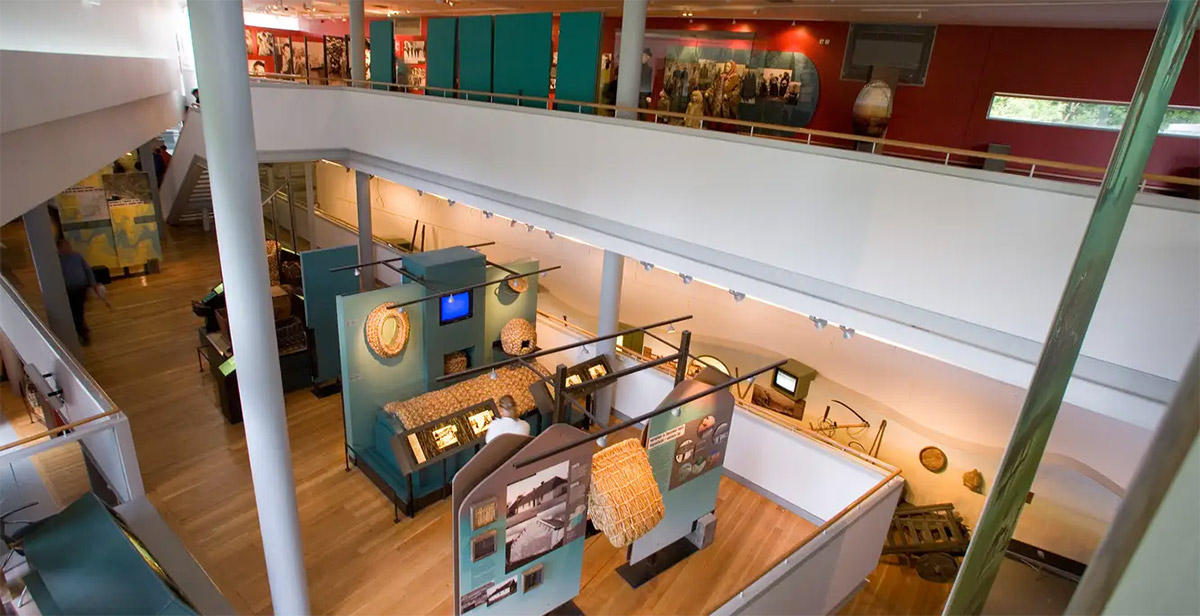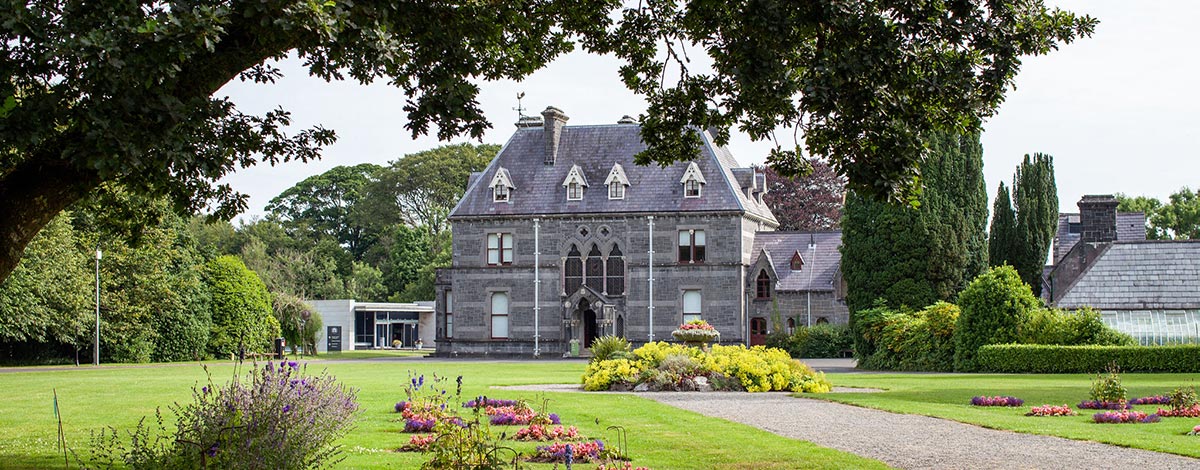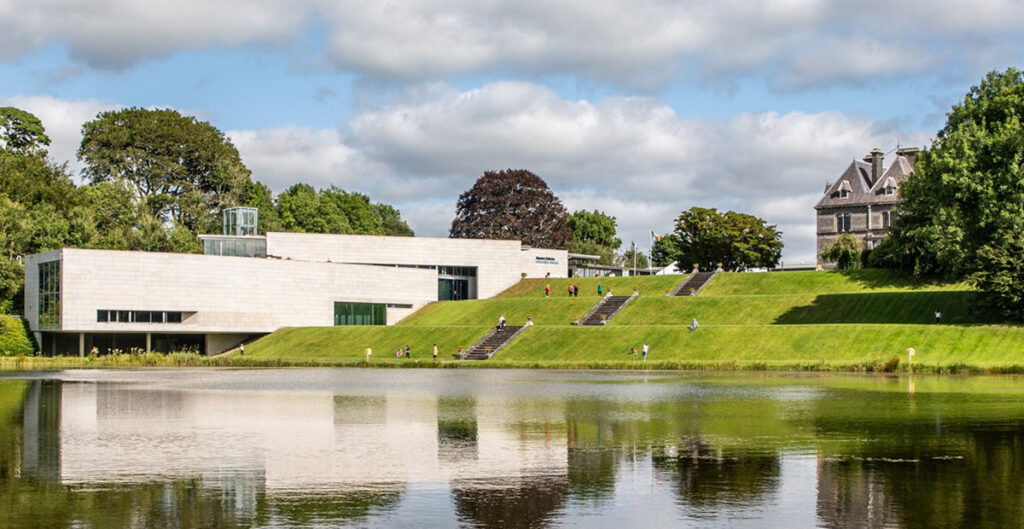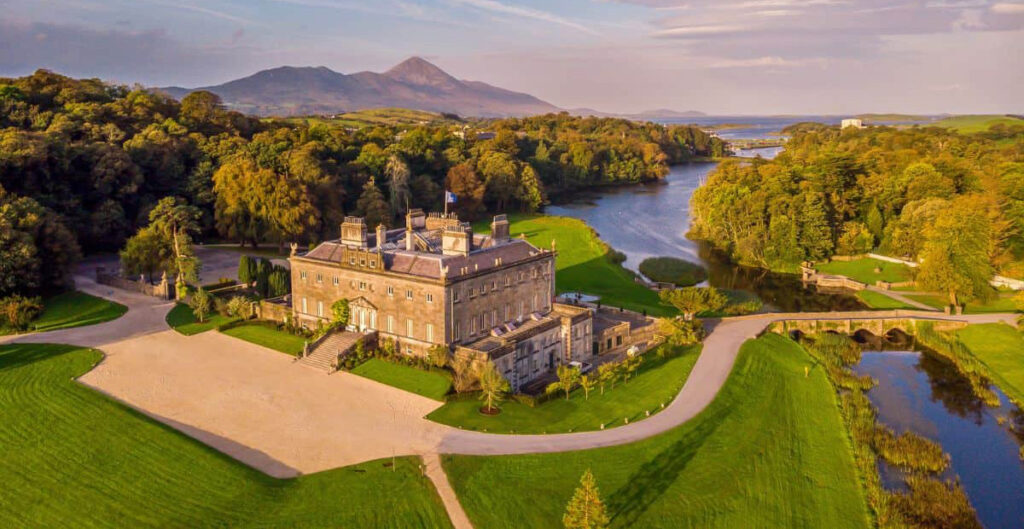The National Museum of Ireland – Country Life is the only branch of the National Museum outside Dublin and although we knew of it, we’d never had the opportunity to visit. It always seemed like a bit of a strange location for one of our national museums but we found ourselves in the area and decided to pop in for a look. We were glad we did. We really enjoyed the visit.
Where is the National Museum of Ireland: Country Life?
The National Museum of Ireland – Country Life is set within the gorgeous 30-acre Turlough Park estate, offering more than just the museum itself. You’ll find beautifully restored Victorian gardens, parkland, and woodlands to explore.
It’s located in Turlough in County Mayo, just outside Castlebar on the N5 road. It’s a good distance away from the other branches of the National Museum of Ireland which are all in Dublin. The nearest town is Castlebar with Westport and the Wild Atlantic Way about half an hour drive away. You can take the N84 from Galway. There’s a train station in Castlebar on the Dublin to Westport line. Public transport links to the museum itself are poor but there’s lots of free parking if you’re driving.
What is the National Museum of Ireland: Country Life about?
The museum focuses on the period between 1850 and 1950 and shows various items from rural life in Ireland during that period. It is very much about the Ireland you’ll have seen in movies such as The Quiet Man, The Field and The Banshee’s of Inisherin.
The beautiful, modern building is in stark contrast to the simpler life depicted inside. Spread across a number of floors, the museum is surprisingly bigger than what you expect from the outside. The building is cleverly built into the slope and as a result, doesn’t detract from the environment around it too much. It’s the type of place that Kevin McCloud would LOVE if it was on an episode of Grand Designs.

That environment is the grounds of Turlough House, built in the 1860’s and owned by the Fitzgerald family until the 1990’s when Mayo County Council bought it. The grounds are open to the public and feature a Victorian garden and playground. I can imagine it being quite pleasant on a nice day. We had to imagine when we went because it was raining.
What’s in the National Museum of Ireland: Country Life?
On entering, you’re greeted by a display of clothing worn by Aran islanders in the late 19th century. I was interested to learn that Ireland doesn’t have distinctive national clothing except for those on the Aran Islands. It’s not an Aran jumper by the way! There’s a few items of native Aran costume you can try on if you’re so inclined. We got a great laugh trying to work out which way things go on. Is it a shawl? Is it a skirt? Who knows? Who cares!
One of the great things about the museum is that you’re encouraged to touch a lot of the items. You can pick up baskets and see how items were carried to market back in the day, or sit on seats made of straw to see how strong they were. It’s a great approach that makes it a lot more immersive than simply walking around looking at exhibits. We love touching things.

On the next floors, you learn about life in rural Ireland. The museum uses a mix of objects, rare archive photography, interactive displays and film footage to depict the lifestyles, customs and traditions of rural Ireland. You’ll learn how people lived, what their houses were like and the domestic items they used. You’ll see how they interacted with the natural environment and used their natural surroundings, especially in the context of farming and fishing. You’ll also discover trades and crafts and how traditional skills like weaving, basket making, carpentry and more were vital to Ireland’s rural inhabitants. It really is a fascinating look at how people lived in the country 100 years or so ago.
The effects of the famine are touched upon however the collection is mainly focused around a time after it and the changes Ireland went through in the aftermath. The struggle for independence also features and as you can imagine, that had a big effect on rural communities. In this modern world of instant information and technology, it really is insightful to learn how things were done in simpler times. Imagine a time when people could eat their food without taking a picture of it to get a few likes first?

Aside from the main museum, you can also see inside Turlough Park House where some of the rooms on the ground floor are open. It’s typical of a “big house” of the period where wealthy landlords, the landed gentry, lived. In fact, I was interested to learn that many of these landlords actually spent much of their time in London, visiting these massive estates from time to time. It is a pity that more of Turlough Park House is not open as I’m sure the grandeur of the noble class would have been fascinating to see, especially in contrast to the tales of extreme poverty in the museum galleries.
The Verdict on the National Museum of Ireland – Country Life
The National Museum of Ireland – Country Life is well worth a visit. It’s an interesting look at an integral part of our history and whether you’re from a rural area yourself or a city slicker, you’ll look back in admiration at how people survived despite their struggles in a period categorised by poverty and great change. Visit and learn something. You’ll be glad you did.



Pingback: A Visit to Westport House